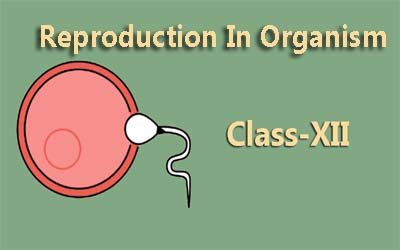Course description
The world of flowering plants is a captivating display of color, form, and function. In Class 11 Biology, the Morphology of Flowering Plants unit takes you on a journey to understand the intricate structure and organization of these essential organisms. It's like dissecting a blueprint, revealing how each part works together to ensure plant survival and reproduction.
Here's a breakdown of the key concepts you'll encounter:
Plant Organs and their Functions: This section lays the foundation by introducing the main organs of a flowering plant and their specific roles:
Roots: Explore the different types of root systems (taproot, fibrous) and how they absorb water and minerals from the soil, anchoring the plant in place.
Stems: Learn about the various functions of stems, including providing support, transporting water and nutrients throughout the plant, and bearing leaves, flowers, and fruits. You'll also explore stem structures and modifications.
Leaves: Delve into the world of photosynthesis, the process by which leaves capture sunlight energy to produce food for the plant. You'll also learn about gas exchange (respiration) and transpiration (water release) occurring through leaves. Leaf shapes, venation patterns, and modifications will be covered as well.
In-depth Exploration of Flowers: Flowers are the stars of the plant show, and this section dissects their fascinating structure:
Floral whorls: Flowers are typically composed of four whorls: calyx (sepals), corolla (petals), androecium (stamens), and gynoecium (pistil). You'll learn about the function of each whorl in flower development, protection, and reproduction.
Floral sexuality: Explore how flowers can be bisexual (having both male and female reproductive parts) or unisexual (having only male or female parts).
Pollination and fertilization: Discover the process of pollen transfer from the stamen (male) to the stigma (female) of a flower, which can lead to fertilization and seed development.
Fruits and Seed Dispersal: This section explores the final stage of a flowering plant's life cycle:
Fruit development: Learn how fruits develop from ripened ovaries after fertilization. You'll explore the different types of fruits and their diverse functions in seed dispersal.
Seed dispersal mechanisms: Discover how plants utilize various strategies, like wind, water, or animals, to disperse their seeds and ensure germination in new locations.
Inflorescence and Phyllotaxy: This section might delve into more specific aspects of plant morphology:
Inflorescence: The arrangement of flowers on a flowering stalk. You'll explore different inflorescence types (e.g., racemose, cymose) and their significance.
Phyllotaxy: The study of leaf arrangement on a stem. You'll learn about different leaf patterns and their role in light capture and resource utilization.
Beyond these core concepts, your course might explore:
Plant Tissue Systems: Distinguish between different plant tissues (xylem, phloem, parenchyma, sclerenchyma) and their specialized functions in transport, support, and storage.
Plant Adaptations: Explore how flowering plants have adapted their structures to survive in various environments, like deserts, rainforests, and aquatic habitats.
Economic Importance of Flowering Plants: Understand the role of flowering plants in agriculture, horticulture, and as a source of raw materials for various industries.
সপুষ্পক উদ্ভিদের জগৎ হল রঙ, রূপ এবং কার্যকারিতার এক মনোমুগ্ধকর প্রদর্শন। একাদশ শ্রেণীর জীববিজ্ঞানে, ফুলের উদ্ভিদের অঙ্গসংস্থান বিভাগ আপনাকে এই প্রয়োজনীয় জীবগুলির জটিল কাঠামো এবং সংগঠন বোঝার জন্য একটি যাত্রায় নিয়ে যায়। এটি উদ্ভিদের বেঁচে থাকা এবং প্রজনন নিশ্চিত করতে প্রতিটি অংশ কীভাবে একসাথে কাজ করে তা প্রকাশ করে একটি নীলনকশা বিচ্ছিন্ন করার মতো।
আপনি যে মূল ধারণাগুলির মুখোমুখি হবেন সেগুলির একটি ভাঙ্গন এখানে দেওয়া হলঃ
উদ্ভিদ অঙ্গ এবং তাদের কার্যাবলীঃ এই বিভাগটি একটি সপুষ্পক উদ্ভিদের প্রধান অঙ্গ এবং তাদের নির্দিষ্ট ভূমিকার পরিচয় দিয়ে ভিত্তি স্থাপন করেঃ
শিকড়ঃ বিভিন্ন ধরনের শিকড় পদ্ধতি (টেপরট, তন্তুযুক্ত) এবং কীভাবে তারা মাটি থেকে জল এবং খনিজ শোষণ করে, উদ্ভিদকে জায়গায় নোঙর করে তা অন্বেষণ করুন।
কান্ডঃ কান্ডের বিভিন্ন কাজ সম্পর্কে জানুন, যার মধ্যে রয়েছে সহায়তা প্রদান, উদ্ভিদ জুড়ে জল এবং পুষ্টি পরিবহন এবং পাতা, ফুল এবং ফল বহন করা। আপনি কান্ডের কাঠামো এবং পরিবর্তনগুলিও অন্বেষণ করবেন।
পাতাঃ সালোকসংশ্লেষণের জগতে প্রবেশ করুন, যে প্রক্রিয়ার মাধ্যমে পাতাগুলি উদ্ভিদের জন্য খাদ্য উৎপাদনের জন্য সূর্যালোকের শক্তি গ্রহণ করে। আপনি পাতার মাধ্যমে ঘটে যাওয়া গ্যাস বিনিময় (শ্বাস-প্রশ্বাস) এবং বাষ্পীভবন (জল মুক্তি) সম্পর্কেও শিখবেন। পাতার আকার, ভেনেশন প্যাটার্ন এবং পরিবর্তনগুলিও আচ্ছাদিত করা হবে।
ফুলের গভীর অন্বেষণঃ ফুলগুলি উদ্ভিদের প্রদর্শনীর তারকা, এবং এই বিভাগটি তাদের আকর্ষণীয় কাঠামোকে বিচ্ছিন্ন করেঃ
ফুলের ঘূর্ণঃ ফুল সাধারণত চারটি ঘূর্ণ নিয়ে গঠিতঃ ক্যালিক্স (সেপাল) করোলা (পাপড়ি) অ্যান্ড্রয়েসিয়াম (পুংকেশর) এবং গাইনোসিয়াম। (pistil). আপনি ফুলের বিকাশ, সুরক্ষা এবং প্রজননে প্রতিটি চক্রের কার্যকারিতা সম্পর্কে শিখবেন।
ফুলের যৌনতাঃ ফুলগুলি কীভাবে উভকামী (পুরুষ ও মহিলা উভয় প্রজনন অংশ সহ) বা একলিঙ্গ হতে পারে তা অন্বেষণ করুন। (having only male or female parts).
পরাগায়ন এবং নিষিক্তকরণঃ একটি ফুলের স্ট্যামেন (পুরুষ) থেকে স্টিগমা (মহিলা)-তে পরাগ স্থানান্তরের প্রক্রিয়াটি আবিষ্কার করুন, যা নিষিক্তকরণ এবং বীজের বিকাশ ঘটাতে পারে।
ফল এবং বীজ বিস্তারঃ এই বিভাগটি একটি সপুষ্পক উদ্ভিদের জীবনচক্রের চূড়ান্ত পর্যায়টি অন্বেষণ করেঃ
ফলের বিকাশঃ জেনে নিন কিভাবে নিষিক্তকরণের পর পাকা ডিম্বাশয় থেকে ফলের বিকাশ ঘটে। আপনি বীজ ছড়িয়ে দেওয়ার ক্ষেত্রে বিভিন্ন ধরনের ফল এবং তাদের বিভিন্ন কার্যকারিতা অন্বেষণ করবেন।
বীজ বিচ্ছুরণ প্রক্রিয়াঃ গাছপালা কীভাবে তাদের বীজ ছড়িয়ে দিতে এবং নতুন জায়গায় অঙ্কুরোদগম নিশ্চিত করতে বায়ু, জল বা প্রাণীর মতো বিভিন্ন কৌশল ব্যবহার করে তা আবিষ্কার করুন।
পুষ্পবিন্যাস এবং ফাইলোট্যাক্সিঃ এই বিভাগটি উদ্ভিদের অঙ্গসংস্থানবিদ্যার আরও নির্দিষ্ট দিকগুলি অনুসন্ধান করতে পারেঃ
পুষ্পবিন্যাসঃ একটি ফুলের ডালে ফুলের বিন্যাস। আপনি বিভিন্ন ধরনের পুষ্পবিন্যাস (e.g., রেসমোজ, সিমোজ) এবং তাদের তাৎপর্য অন্বেষণ করবেন।
ফাইলোট্যাক্সিঃ একটি কান্ডের উপর পাতার বিন্যাসের অধ্যয়ন। আপনি পাতার বিভিন্ন নিদর্শন এবং হালকা ক্যাপচার এবং সম্পদ ব্যবহারে তাদের ভূমিকা সম্পর্কে শিখবেন।
এই মূল ধারণাগুলির বাইরে, আপনার কোর্সটি অন্বেষণ করতে পারেঃ
উদ্ভিদ টিস্যু সিস্টেমঃ বিভিন্ন উদ্ভিদ টিস্যু (জাইলেম, ফ্লোয়েম, প্যারেনকাইমা, স্ক্লেরেনকাইমা) এবং পরিবহন, সমর্থন এবং সংরক্ষণের ক্ষেত্রে তাদের বিশেষ ফাংশনগুলির মধ্যে পার্থক্য করুন।
উদ্ভিদ অভিযোজনঃ মরুভূমি, রেইন ফরেস্ট এবং জলজ আবাসস্থলের মতো বিভিন্ন পরিবেশে বেঁচে থাকার জন্য ফুলের গাছগুলি কীভাবে তাদের কাঠামোকে অভিযোজিত করেছে তা অন্বেষণ করুন।
ফুলের উদ্ভিদের অর্থনৈতিক গুরুত্বঃ কৃষি, উদ্যানপালন এবং বিভিন্ন শিল্পের কাঁচামালের উৎস হিসাবে সপুষ্পক উদ্ভিদের ভূমিকা বুঝুন।



















